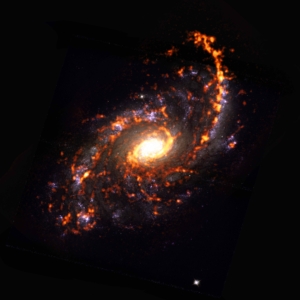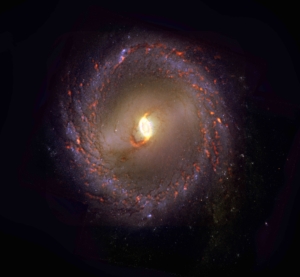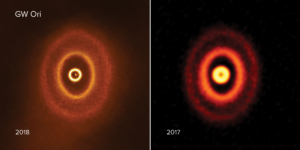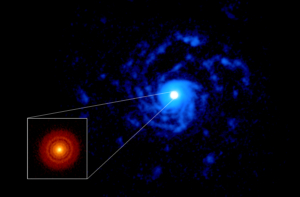Seen here as an ALMA (orange) composite with Hubble Space Telescope (red) data, NGC3627 is one of nearly 100 galaxies observed during a PHANGS census of the nearby Universe. The census revealed that stellar nurseries within galaxies are diverse in both appearance and behavior. This thwarts commonly accepted scientific theory. NGC3627 is an example of asymmetric morphology catalogued by the study.


PHANGS-ALMA Survey: NGC5248
Shown here as an ALMA (orange) composite with Hubble Space Telescope (red) data, NGC5248 is an example of a galaxy featuring asymmetric morphology, and is one of nearly 100 galaxies catalogued by the PHANGS project during a recent census of the nearby Universe. The study revealed that stellar nurseries in galaxies are extraordinarily diverse in their appearances and behaviors, and that how they look and act depends on their location.

PHANGS-ALMA Survey: NGC3351
While conducting a census of nearly 100 galaxies in the nearby Universe, the PHANGS survey observed NGC3351, a galaxy featuring an outer ring and bar morphology. Prior to the study, scientists believed that all, or most stellar nurseries, looked and behaved the same. The study revealed that stellar nurseries are actually characterized by extraordinary diversity. NGC3351 is shown here as an ALMA (orange) composite with Hubble Space Telescope (red) data.

ALMA images of triple star system GW Orionis
ALMA images of the planet-forming disk with misaligned rings around triple star system GW Orionis. The image on the right is made with ALMA data taken in 2017 from Bi et al. The image on the left is made with ALMA data taken in 2018 from Kraus et al.

RU Lup Spiral
ALMA image of the planet-forming disk around the young star RU Lup, showing a giant set of spiral arms made out of gas. The structure extends to nearly 1000 astronomical units from the star.

RU Lup
ALMA image of the planet-forming disk around the young star RU Lup. The inset image (lower left, red disk) shows a previous (DSHARP) observation of the dust disk with rings and gaps that hint at the presence of forming planets. The new observation shows a large spiral structure (in blue), made out of gas, that spans far beyond the compact dust disk.





